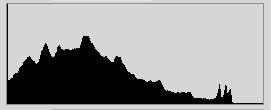I was 14, I needed a hobby. "Hey, Dad, I'm thinking about taking up photography." Old man said, "OK," drove me to the camera store and bought me a brand new Nikon FE, an SB-15, two lenses and a tripod. Just like that.
My buddy's Dad moonlighted at the local newspaper as a photographer. He showed us how to work the camera. We used to roam the city in search of subjects. Sunrise, sunset. Used import cars. Whatever.
"Hey, how about taking pictures of lightning?"
"Great idea."
Up the roof we went, umbrella in one hand, and cable release in the other. The thought of being struck by lightning never crossed our minds. Somehow the pictures never turned out the way we wanted. They were all white.
"Wanna try to take pictures of trailing headlights?"
"Yeah!"
We'd set up the tripod in the middle of the crosswalk. Boy did we get some extra bright headlights...
Those were the days living dangerously.
Fast forward a few years, I decided to study digital imaging in graduate school because of my interest in photography, and because I would be able to show the results to my mother. "Look, Ma! Gaussian Blur..." I worked on projects in medical imaging, computer animation, facial expression analysis and face recognition. I can tell you exactly how Gaussian filters work, or the difference between bi-linear and bi-cubic interpolation. But I won't. For a number of years I was a professional student--they paid me to go to school.
When I got out of school, I landed a job at Kodak Research Labs. What an awesome place! I was surrounded by all kinds of experts in imaging and photography. You show them a picture, and they'd hold it up to their nose and say, "Yep, there's too much magenta and the focus is a little soft..."
Photography sorta took the backseat until years later when my kids were born. So cute yet so stinky... I wanted to capture every little expression. First studio shots were done with a borrowed strobe and a bed sheet as the backdrop. I devoured books and magazines and blogs... bought DVDs and attended workshops... joined online forums and organizations... Exposure finally made sense. Got my head around strobes and off-camera flash. I always have a camera on me, even if it's just the iPhone. Through photography I was able to meet some amazing people, in cyberspace as well as real life. I hope to feature some of them here too. I've improved a bit since I was a teenager, but there's yet so much to learn. Ah... such is the journey.










